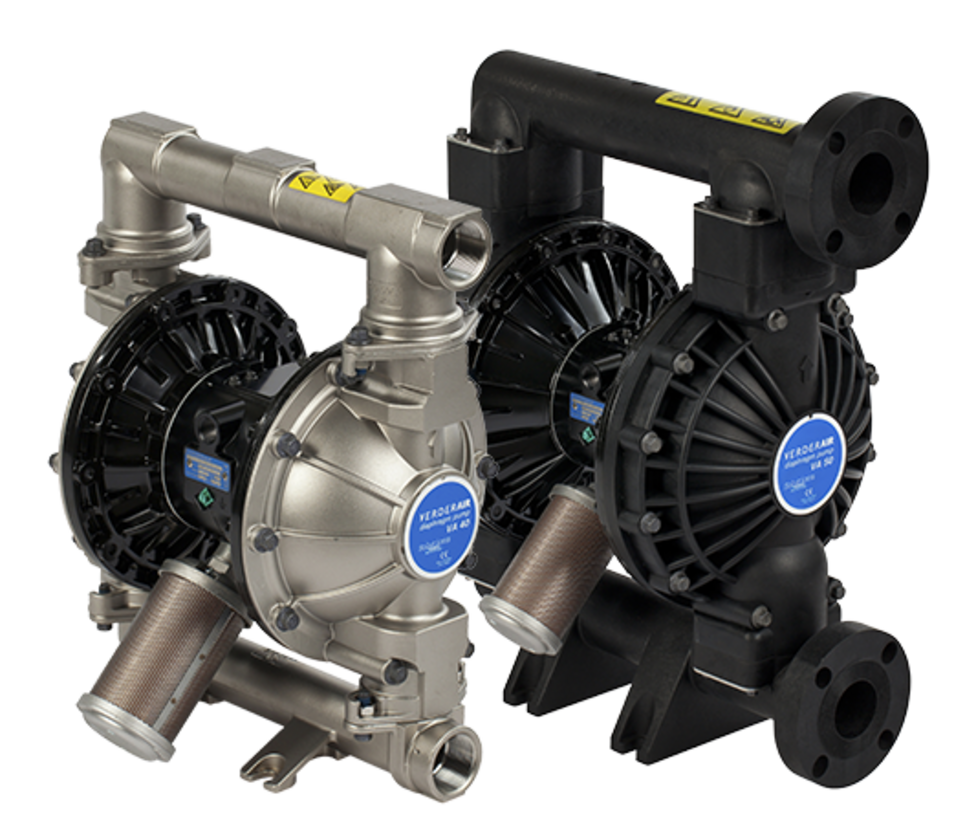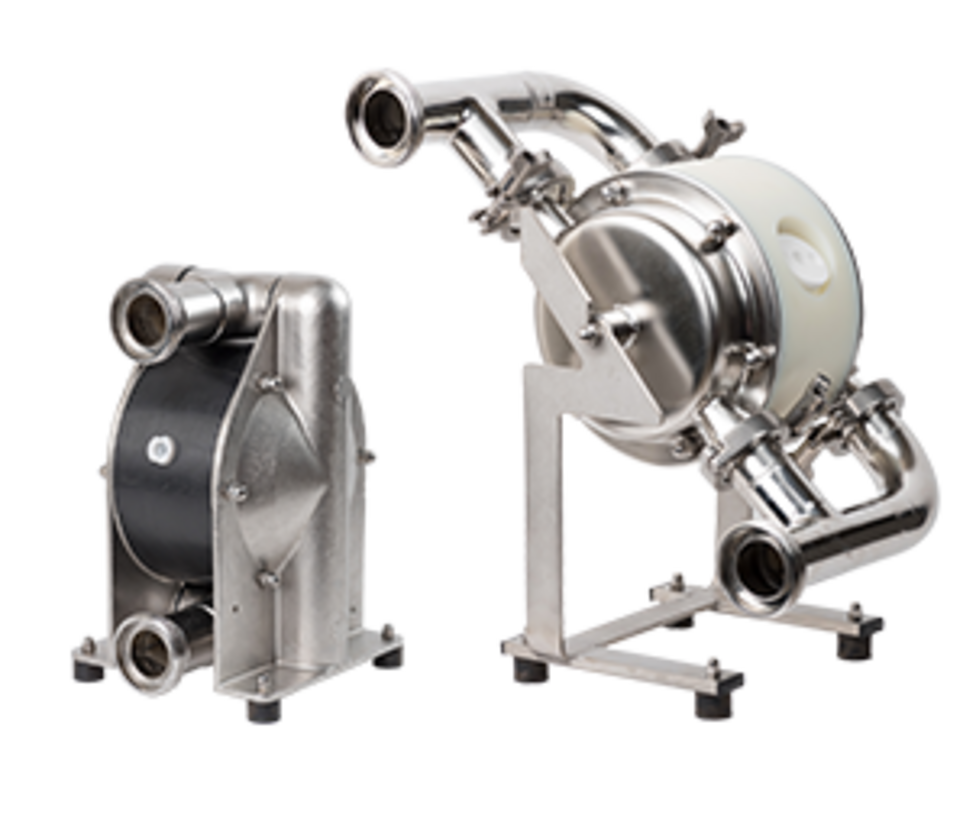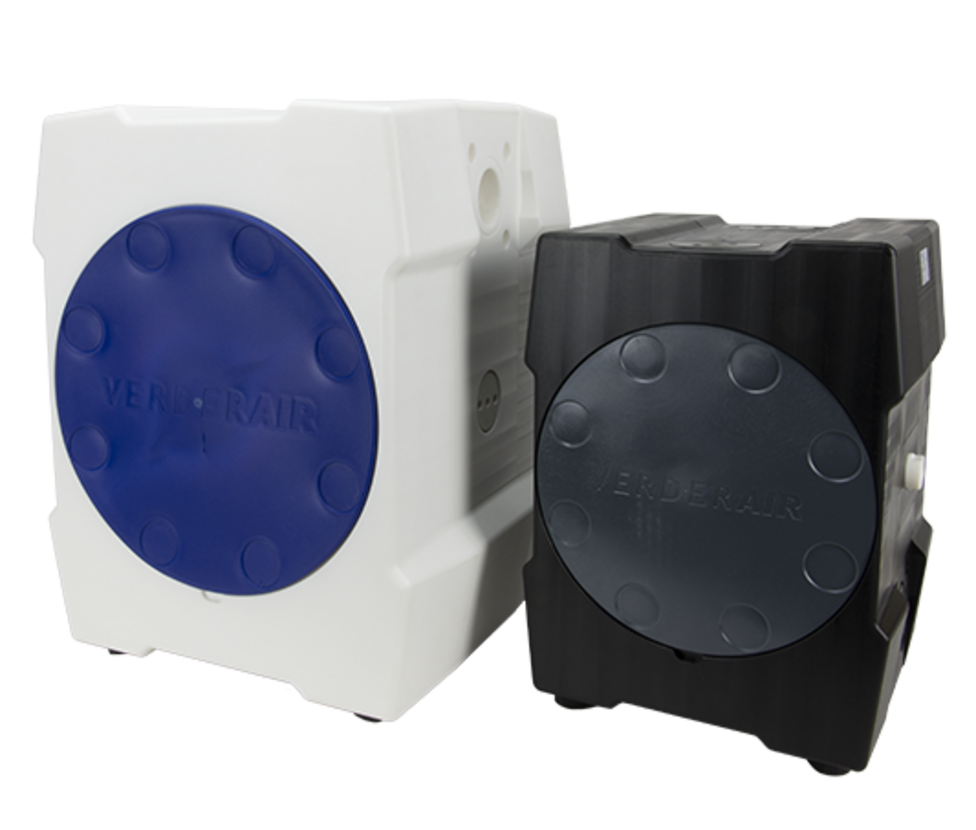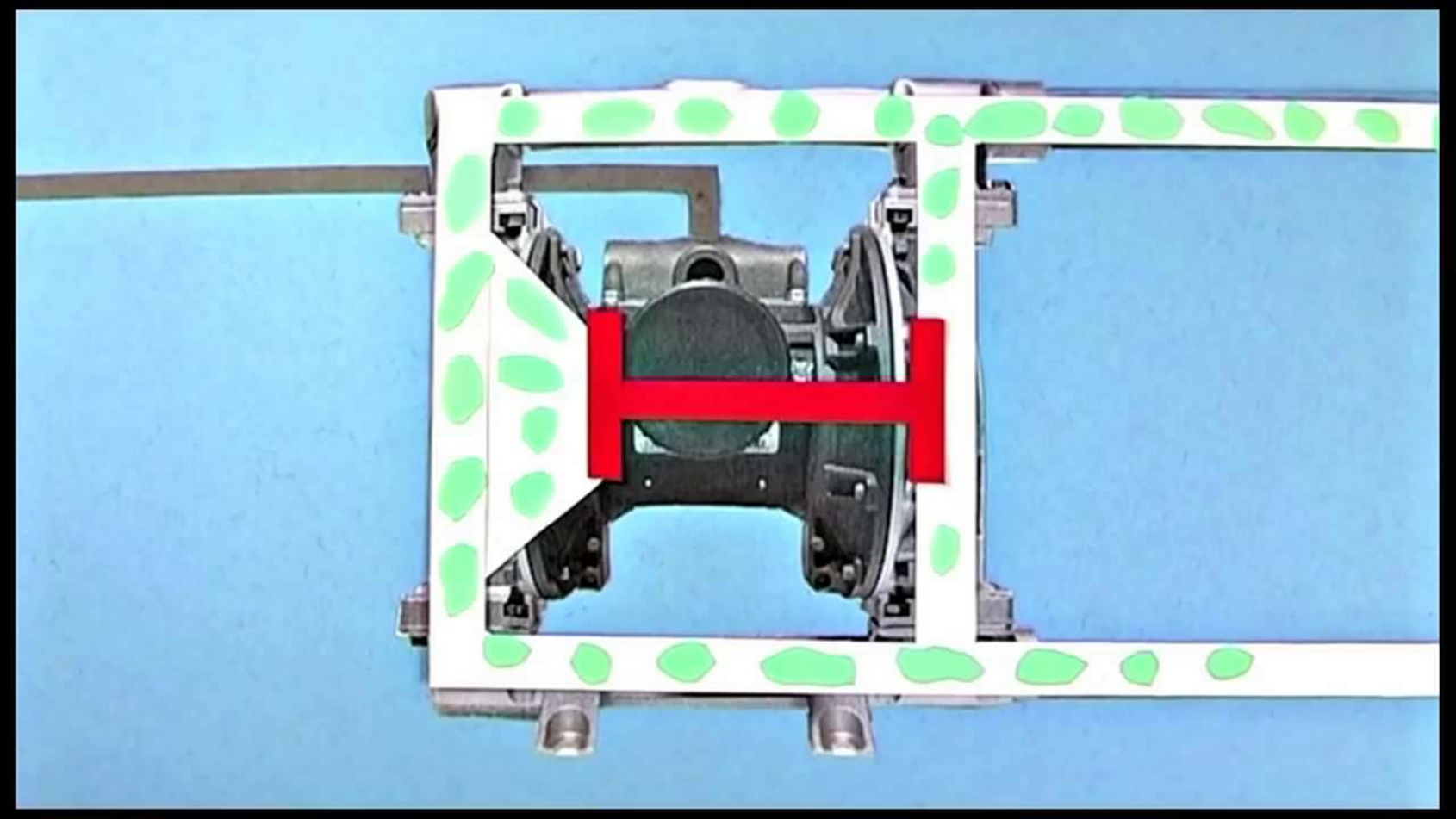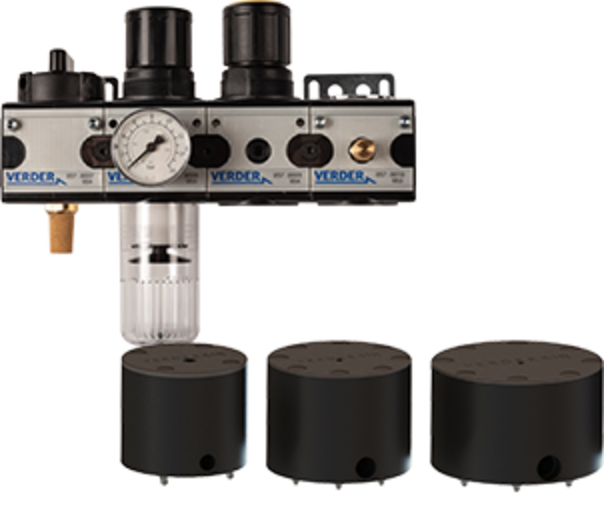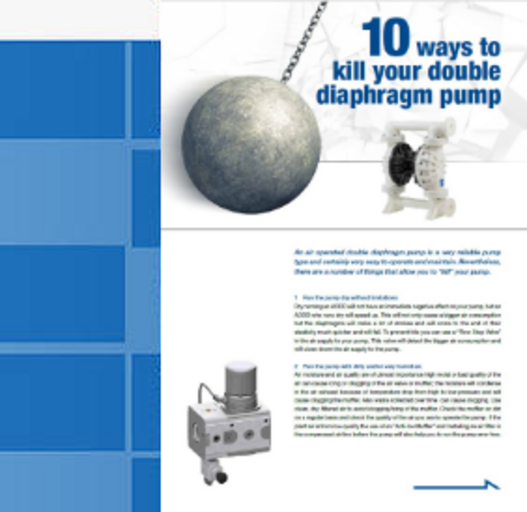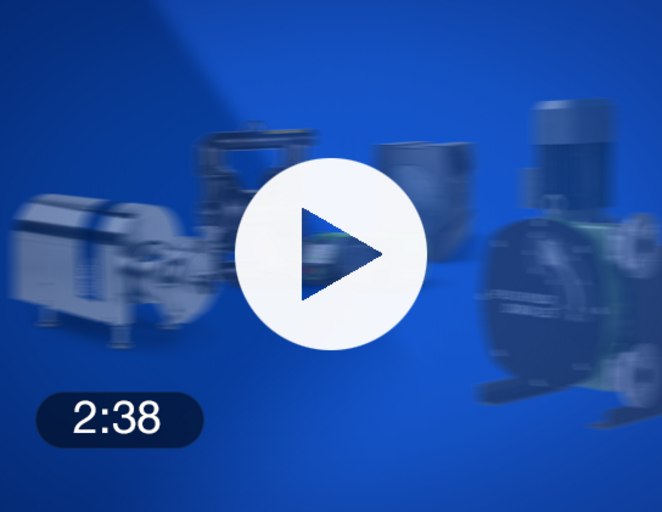Diaphragm Pumps
A diaphragm pump, also knows as a membrane pump, is a positive displacement pump that enables users in industries to standardise on a pumptype that is suitable for a wide variety of fluids. The only requirement is compressed airsupply.
How are diaphragm pumps used?
Diaphragm pumps are used in many industries. There is an extensive number of construction materials available to produce many configurations for difficult fluids. In addition to the fluid handling properties, diaphragm pumps can be specified for ATEX zones, EC1935/2004, FDA and 3A hygienic applications.
Working principle of a diaphragm pump
A diaphragm pump is a positive displacement pump which utilises two flexible diaphragms that reciprocate back and forth, creating a temporary chamber.
Question about how diaphragm pumps work?
Do you need help? Our pump experts are there for all your questions!
How do Diaphragm Pumps work?
A double diaphragm is a positive displacement pump which utilises two flexible diaphragms that reciprocate back and forth, creating a temporary chamber, which both draws in and expels fluid through the pump. The diaphragms work as a separation wall between the air and the liquid.
The first stroke
The two diaphragms that are connected by a shaft through the centre section where the air valve is located. The purpose of the air valve is to direct the compressed air to the back of diaphragm number one causing it to move away from the centre section. The number one diaphragm causes a press stroke moving liquid out of the pump. At the same time diaphragm number two is performing a suction stroke. The air behind diaphragm number two is being pushed out to the atmosphere causing atmospheric pressure to push the liquid to the suction side. The suction ball valve is pushed away off its seat allowing the fluid to flow past the ball valve into the liquid chamber.
The second stroke
When the pressurised diaphragm number one has reached the end of its stroke, the movement of the air is switched from diaphragm number one to the back of diaphragm number two by the air valve. The compressed air pushes diaphragm number two away from the centre block resulting in diaphragm number one being pulled toward the centre block. In pump chamber number two the discharge ball valve is pushed off its seat, whilst in pump chamber number one the opposite occurs. Upon completion of the stroke the air valve leads the air again to the back of diaphragm number one and restarts the cycle.
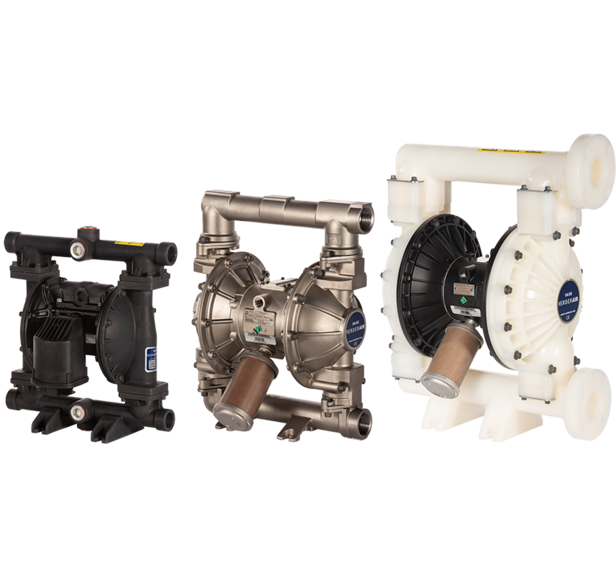
Why Diaphragm Pumps?
The AODD pump is a versatile workhorse that enables users across a hugely diverse range of industries to standardise on a single pump type that for handling a wide variety of fluids. So long as there is a compressed air supply available the pump can be installed wherever it is required and should circumstances change it can be moved round a plant and switched to other operations with ease. Whether to fluid being handled requires a gentle pumping action, is chemically or physically aggressive the positive displacement AODD pump offers an efficient and low maintenance solution.
Where Can Diaphragm Pumps Be Used?
Diaphragm pumps are a common site in many industries. There is an extensive number of construction materials available to produce a bewildering number of configurations to accommodate difficult fluids such as
- Corrosive chemical
- Volatile solvents
- Viscous, sticky fluids
- Shear-sensitive foodstuffs and pharma product
- Dirty water and abrasive slurry
- Smaller solids
- Creams, gels and oils
In addition to the fluid handling properties an AODD pump can be specified for ATEX zones, EC1935/2004, FDA and 3A hygienic applications amongst other industry compliance measures.
Engineering diaphragm pumps
Since the first introduction to the market in the 1950s, the construction and basic working principles of air operated diaphragm pumps have remained very similar to the early double diaphragm pumps. The construction looks very straight-forward, but due to the alternating working principle of the pump, special care has to be made to keep the pumps leak tight.
There are two zones which have to be sealed to keep the liquid inside the pump: the contact between the diaphragm and the outer pump chamber and the contact between the manifolds and the outer pump chamber.
Traditionally, clamping bands or bolts are used to seal the zones adjacent to the pump chamber. By using clamps, especially on bigger pumps and on applications with products of higher viscosity, the stress caused by the movement of the pumps can lead to leakages. For this reason, Verder has chosen to use bolted versions as standard. The bolts are divided over the sealing surface to equalize the pressure over the sealing area.
The drawings illustrate the sealing principle between the manifolds and the outer pump chambers.
Although it initially seems straight-forward, a high degree of engineering is necessary to construct a perfect leak-tight pump as the Verderair proves to be.
Reasons to choose a diaphragm pump
Verderair double diaphragm pumps are excellent pumps for all kinds of liquids. Paste-like, thick and thin fluidizing or solids containing (< 9,4 mm -25 mm for the Sanitary air operated double diaphragm pumps). The air valve design guarantees non-stalling operation. The Verderair air operated double diaphragm pumps don’t need air lubrication and have an anti-icing design. Even in moist air conditions the air motor is designed for long life.
A Verderair diaphragm pump has excellent corrosion resistance. Verderair AODD pumps offer a wide range of wetted materials, metallic and non-metallic. The range for wetted parts runs from non-metallic air operated double diaphragm pumps models (Acetal, Polypropylene, Kynar, conductive Polypropylene) to metallic air operated double diaphragm pumps models (aluminium, cast iron and stainless steel).
Verderair air operated double diaphragm pumps are designed to be easy to install and maintain. Verderair air operated double diaphragm pumps are excellent calamity and emergency pumps.
Benefits of a Verderair diaphragm pump
Verderair double diaphragm pumps are suitable and highly effective in almost every application. Verderair pumps have an extended choice in materials, both in metallic and non-metallic finishes. The non-metallic pump range features pumps in cast versions and solid plastic. Verderair double diaphragm pumps are available in Acetal, conductive Polypropylene, Kynar, aluminum, stainless steel, cast iron, Polyethylene and PTFE. Verderair double diaphragm pumps are perfect pumps for every industry, because of the wide range of materials.
Verderair air operated diaphragm pumps provide non-stalling operation, even at low pressure. The Verderair double diaphragm pumps will run dry indefinitely without damage and is self-priming from the start. Even in wet air, the stainless steel diaphragm rod air motor is designed for long life and corrosion resistance. Verderair AODD pumps all have a long Mean Time Between Failure (MTBF). Diaphragm pumps from Verderair are highly interchangeable, which reduces the total life costs.
Verderair double diaphragm pumps have seal-less, leak proof design which prevents waste and mess. Verderair AODD pumps are portable and easy to install, ideal for multi –location use.
Question about how diaphragm pumps work?
Do you need help? Our pump experts are there for all your questions!

